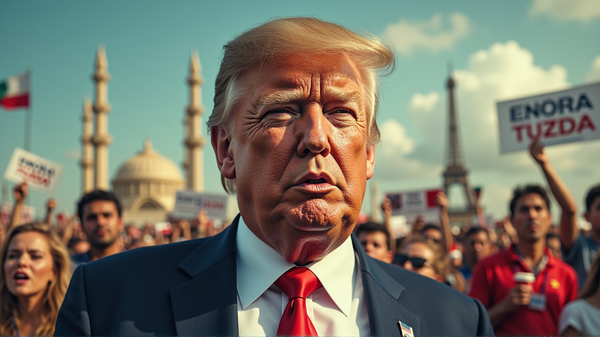The Ripple Effect of Trump's Tariffs: Unveiling Economic and Political Consequences

When tariffs turn into taxes, the burden distribution weighs heavy, and voters are keenly observing the new economic landscape. As additional tariffs declared by President Donald Trump on April 2, classified as “Liberation Day,” unfold, the true ramifications are becoming ever more apparent.
A Closer Look at the Tariff Turbulence
The Trump administration’s approach to trade policy can appear erratic — a stark departure from traditional methods. Take, for example, the rapid shifts experienced in just one day on March 11, where aluminum and steel tariffs from Canada briefly doubled before returning to their previous state. As stated in Star Tribune, these changes suggest a volatile trade environment that places the U.S. on a trajectory not seen since the post-war era.
Tariffs: A Hidden Tax on the People
While they masquerade as protective measures, tariffs function effectively as taxes. For every million dollars of steel imported from Canada, the implications translate into a significant \(250,000 tax masquerading under the guise of a tariff. The Manhattan Institute boldly frames this scenario as potentially the largest peacetime tax increase in America's history, disproportionately affecting lower-income households. Even so-called insiders tout the \)600 billion revenue projection under the guise of a new economic dawn.
Public Backlash, Political Tremors
American sentiment plainly sees the rise in consumer prices that these tariffs threaten. The CBS News Poll reveals that a majority of Americans anticipate immediate price hikes, reflecting mounting dissatisfaction. Such voter sentiment bears significant consequences for Trump’s political support, undermining the economic mandate upon which he was elected.
The Ongoing Impact and Political Reckoning
Economic strain aside, the political implications are substantial, especially as the self-inflicted trade policies clash with key public expectations. Minnesota Republicans, for instance, may feel backstage tremors, wary of the broader national strategy’s impact on their 2026 prospects. As policymakers seek to balance supply-side economics with protectionist instincts, the overarching question remains: at what cost to both economy and governance?
As we move forward, it’s clear the implications of these tariffs are not merely economic inconveniences but catalyzers of a profound national dialogue on economic strategy and policy integrity. The coming months will reveal whether a recalibration is on the horizon or if the current path is a prelude to deeper political divides.




